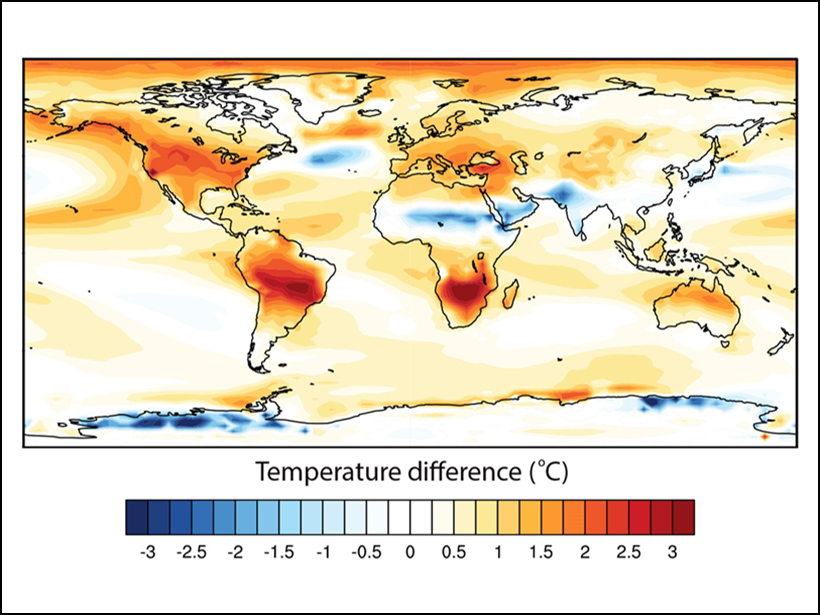Source: Geophysical Research Letters
When Earth’s atmosphere warms, the vast sheets of ice over Antarctica and Greenland melt. This melting, in addition to the thermal expansion of water, leads to rising sea levels. Although it’s clear that seas are rising at an increasing rate, scientists can’t yet precisely predict how fast or how much they will rise in the future. Now, scientists are using climate and fossil data from one of the warmest periods in Earth’s history to help improve our understanding of ice sheet and sea level behavior in a warmer-than-modern world.
When scientists look for hints of how Earth’s warming climate will affect ice sheets, they often refer to the late Pliocene era, between 3.264 and 3.025 million years ago. During this period, the concentration of carbon dioxide in the atmosphere ranged between 300 and 450 parts per million (ppm)—as a reference point, the concentration of atmospheric carbon dioxide in October 2017 was 404.3 ppm. On average, the late Pliocene was warmer than today’s climate by about 2°C–3°C.
Although the late Pliocene was relatively stable climatically, there were cool periods when ice sheets expanded and warm “interglacial” periods in which they retreated, according to climate models. However, marine fossil evidence indicates that sea levels did not always rise and fall in sync with global temperatures. In a new study, de Boer et al. explore a likely culprit for the mismatch: wobbles in Earth’s orbit that affect how solar energy is distributed around the planet.
The team created parallel ice sheet models driven by climate model output to simulate sea level for two warm interglacial periods during the late Pliocene. In one, Earth’s orbit was fairly stable, as it is in modern times. In another the wobbles in the planet’s orbit were high, leading to large variations in received solar insolation.
In the “stable” interglacial period, rising temperatures, due to increased greenhouse gas forcing, led to the expected total sea level rise. In the interglacial period with large variations in orbital forcing, however, temperatures varied out of phase between the Northern and Southern Hemispheres, which caused the ice sheets to expand or retreat in opposite directions. The finding helps to explain past discrepancies between ice sheet model predictions and fossil records, the team reports. (Geophysical Research Letters, https://doi.org/10.1002/2017GL073535, 2017)
—Emily Underwood, Freelance Writer
Citation:
Underwood, E. (2017), How Earth’s orbit affected ice sheets millions of years ago, Eos, 98, https://doi.org/10.1029/2017EO086825. Published on 22 November 2017.
Text © 2017. The authors. CC BY-NC-ND 3.0
Except where otherwise noted, images are subject to copyright. Any reuse without express permission from the copyright owner is prohibited.

